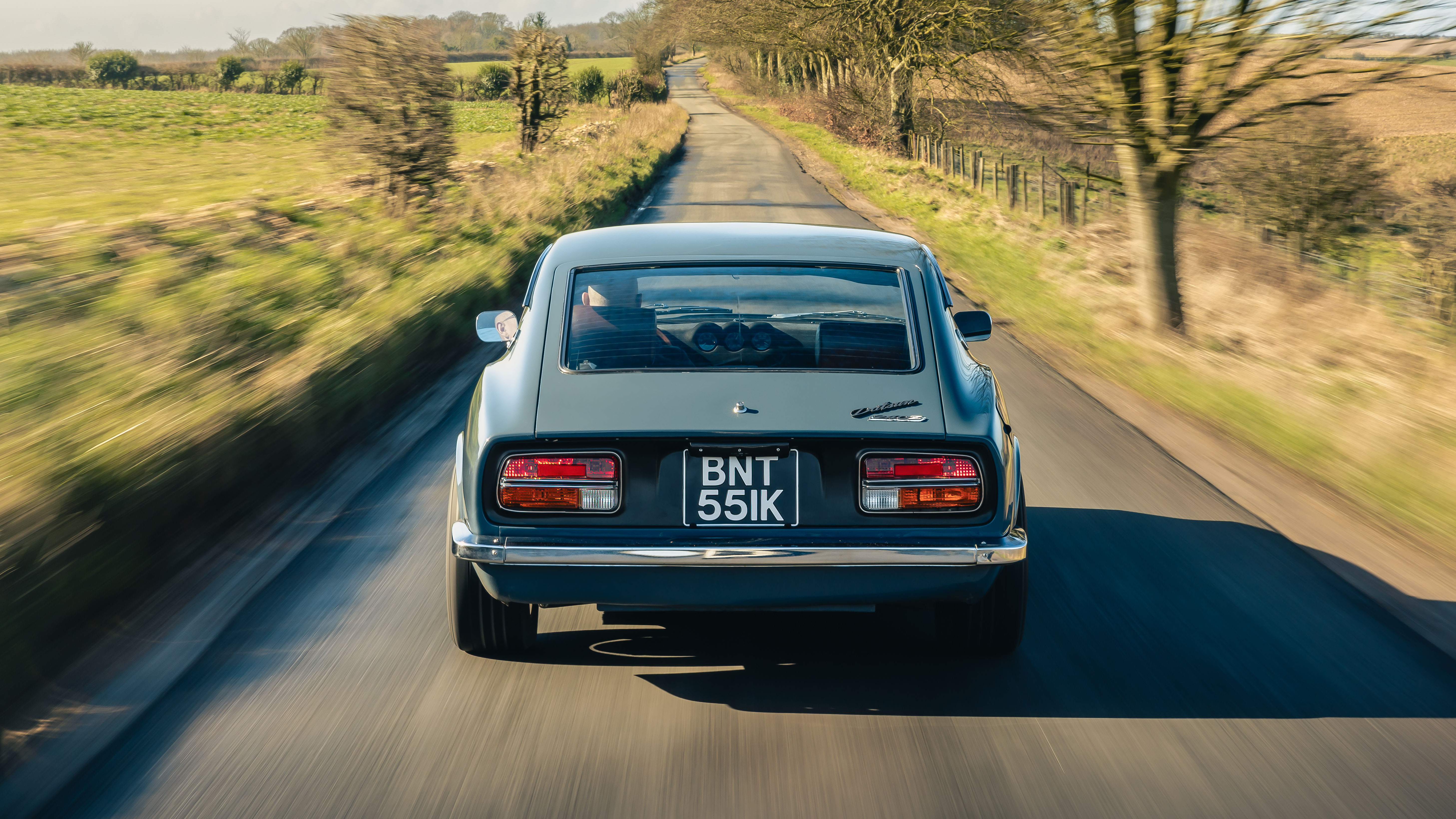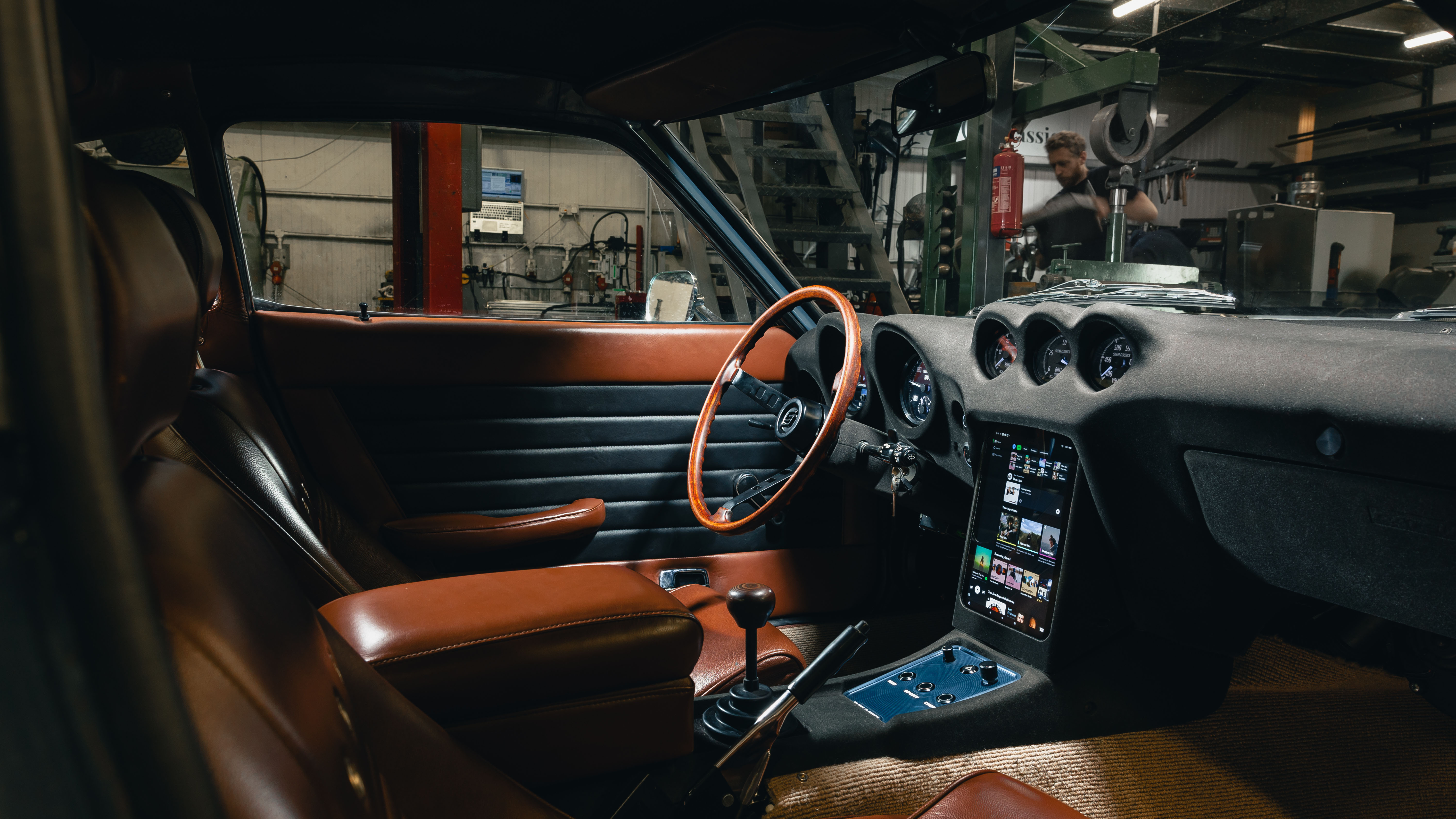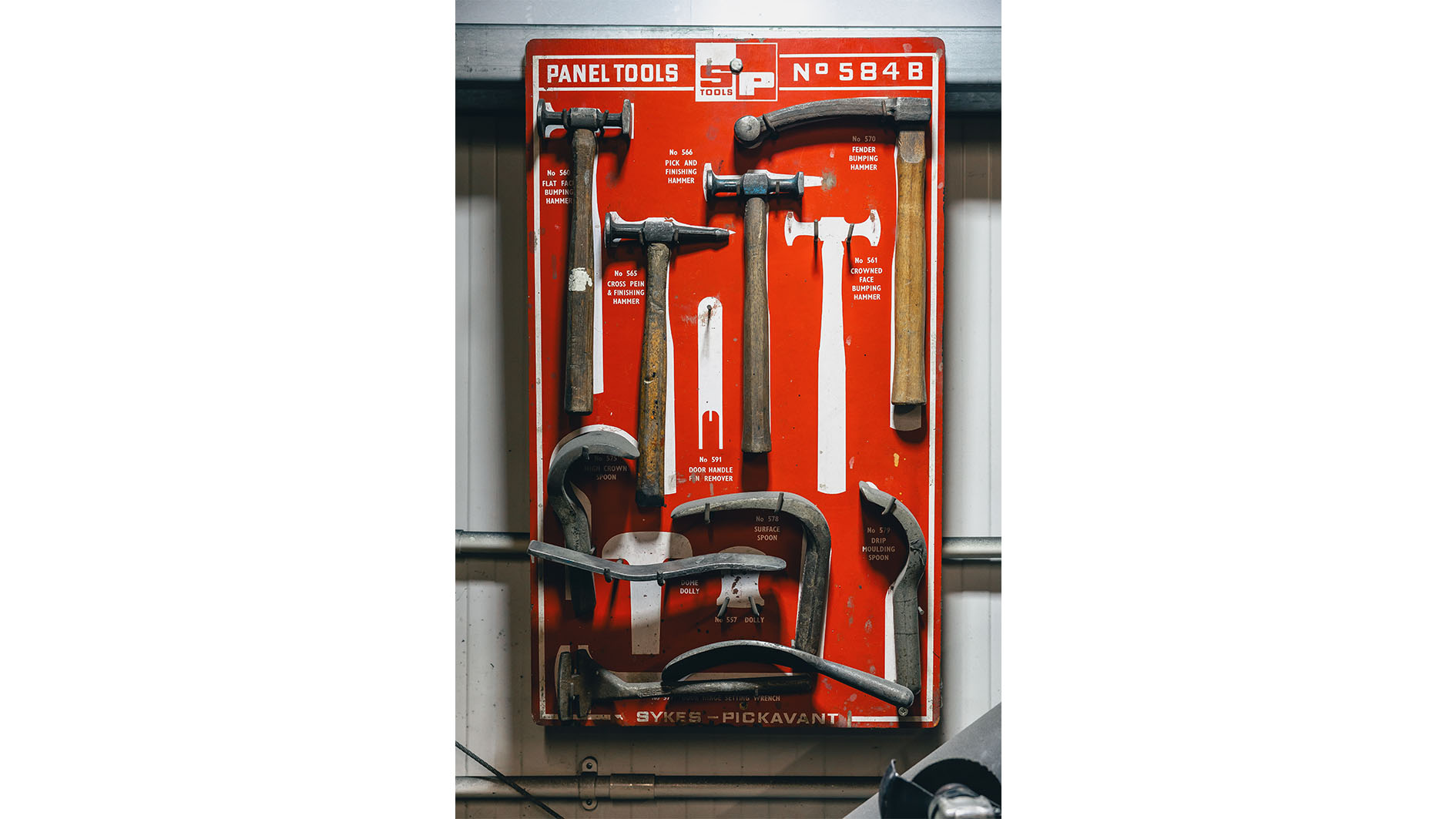
Catching Zs: a (quiet) drive in an electrified Datsun 240Z
Nothing quite like putting your money where your mouth is – just ask Silent Classics owner Jack Kerridge and his Datsun 240Z
It used to be old airfields, now it’s ex- farmyards. Boy there’s some fascinating stuff happening at the back end of these tucked away yards. This one’s in deepest Dorset, smartly reupholstered with fresh concrete, paint and buildings. One side of Silent Classics is Rotron, doing fascinating things with rotary engines for drones and more, across the yard is Parajet, using them to drive fans to help people fly.
Jack Kerridge used to work there before setting up by himself. He’s tall and keen, with something of the wild professor about him. The sort of guy you know would be up for a mad project. His first was converting a Fiat 126 to run on electric. That still sits outside, a little unloved these days as he’s moved on to greater things. Why cars in the first place? “It’s in the blood. My dad is a classic car restorer, so I grew up around all that and it sort of spiralled from there.”
What it spiralled into was a familiar rabbit hole, Jack one of many spotting the niche for converting classics to electric power. Unlike some he was inspired by the engineering rather than the business opportunity. The 126 taught him huge amounts about repurposing existing electrical components and getting them to work together. His bread and butter is the Fiat 500.
Photography: Jonny Fleetwood
“It’s just so suited to electric power, and all the bits fit so easily to the existing chassis.” They’ve built around 15 so far and demand has been so strong that he’s planning on separating that business out into its own high-end brand. Not bad considering Silent Classics itself was only set up a couple of years ago.
Jack’s team of five is young and multi-skilled. “Just about everything is done in house, and even when we use contractors, we like them to come and work here.” It’s not just electrical work. Huge lathes dominate one corner of the workshop, welding guns crackle and spark. But the electric side is interesting. The ‘take a crashed Tesla and rebody it’ approach isn’t for Kerridge. This is much more bespoke.
Each car is given handpicked components to best suit its capabilities. Many of those components are salvaged. “It’s becoming more difficult to source used batteries – although we also use new batteries too,” Kerridge tells me. “We then dismantle those packs and rebuild them in our own housings.” This allows the team to create packs that fit exactly in the spaces in the donor cars. But pairing them with random motors means Silent Classics needs to do all the control electronics itself. “We use open source software to help us do that, in fact we contribute to it as well,” says Kerridge.
The workshop is a cramped mass of ongoing projects. A classic Range Rover is up in the air, having bits fabricated for its undersides, a Bond Bug sits cheek by jowl with a cream Jaguar SS and delightful Fiat Topolino. Once fitted out with a 21kWh pack and 60bhp motor, the latter is what every Mediterranean villa should have for the morning bread run. Above, an after hours motorbike project dangles from the ceiling.
Pride of place right now goes to a Datsun 240Z. This was built not for a client, but Kerridge himself. It’s tiny, gorgeous. It uses a 36kWh battery pack mated to a twin e-motor from a Lexus GS450h, here developing 320bhp. This is not an EV that weighs two tonnes plus. Kerridge has used it to experiment: there are switchable drive modes, an integrated tablet serves as the central screen, the dials have been bespoke made... but you still need to turn a key to start it and there’s a manual handbrake for larks.
It doesn’t need any help with that. A fizzing sound accompanies my exit from the yard. Wheelspin. As much of it as I want, whenever I want, it’ll turn out. Kerridge reckons the weight distribution is close to 50:50 as the motors and inverters are mounted on the rear axle to counterbalance the battery lump under the bonnet, but that can’t counteract 320bhp working on maybe 1,300kg through some eco-minded Falken tyres.
The battery pack is nicely presented, but it’s not a straight six. And that’s the reason I’m often sceptical of cars like this that once had charismatic engines, but now have heartless electrons. There is a small sense of connection however: the wooden gearlever. It has a lovely action, magnets attracting to help pull you into gear and adding resistance to the release as you flick back and forth between forward and reverse.
Elsewhere it’s not perfectly finished, Kerridge admitting it’s put on a backburner when customer projects arrive. There’s a clunk from the propshaft every time you lift off and re-engage drive and a 45mph wobble they need to get to the bottom of. But the experience of being in it, being so small and compact behind that long, slim bonnet and those short, slim pillars and nestled into rich leather, is beguiling. Maybe it’s because the 240Z never meant as much to me as other sports cars that I’m inclined to cut this some slack where I struggle to with electrified 911s.
Top Gear
Newsletter
Thank you for subscribing to our newsletter. Look out for your regular round-up of news, reviews and offers in your inbox.
Get all the latest news, reviews and exclusives, direct to your inbox.
More likely it’s because this has an edge. Kerridge admits his 240Z scares him. It would me in the wet, but today we’ve got fine weather for the infamous Zig Zag Hill. You quickly learn to be patient and gentle with the throttle, but feeding it in, seeing just how much traction you can find, is fun, especially as those twin motors work through a tight diff. The Wilwood brakes are lovely (no regen here at present, but I’d take the feel every time), the steering is delicate, accurate and the coilover suspension gives good control and enough comfort for the kind of driving you’d want to use it for.
Which is what? It’s not refined enough for long trips and besides the lack of rapid charging (it would have added too much weight and complexity, so it’s 7kW max) you’re anchored to about 120 miles range. But for snaffling about in the countryside on a summer’s day, there’s a lot to be said for this. I imagine being parked on a hill and opening the boot to a picnic hamper, thinking how much cooler and less tryhard a 240Z is than an E-Type and actually quite enjoying the fact the buttercups didn’t wilt as I drove past.










